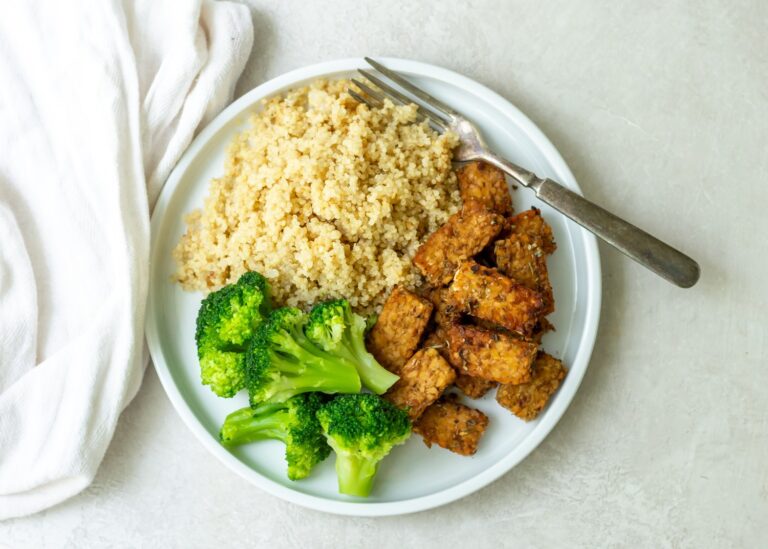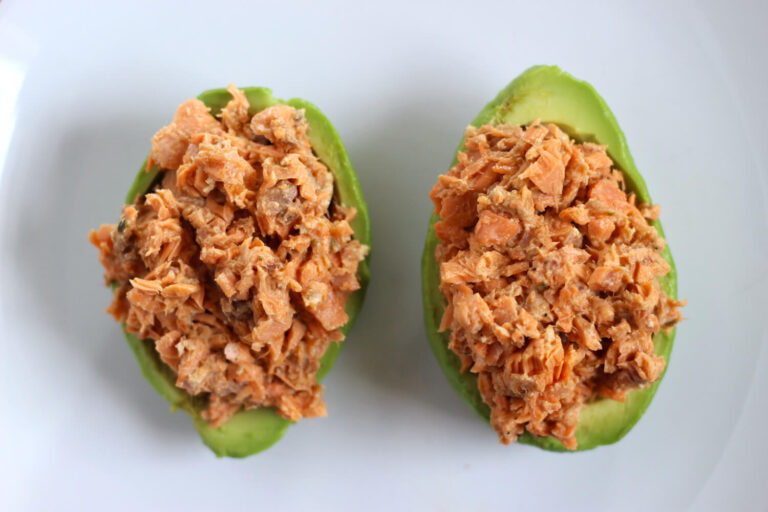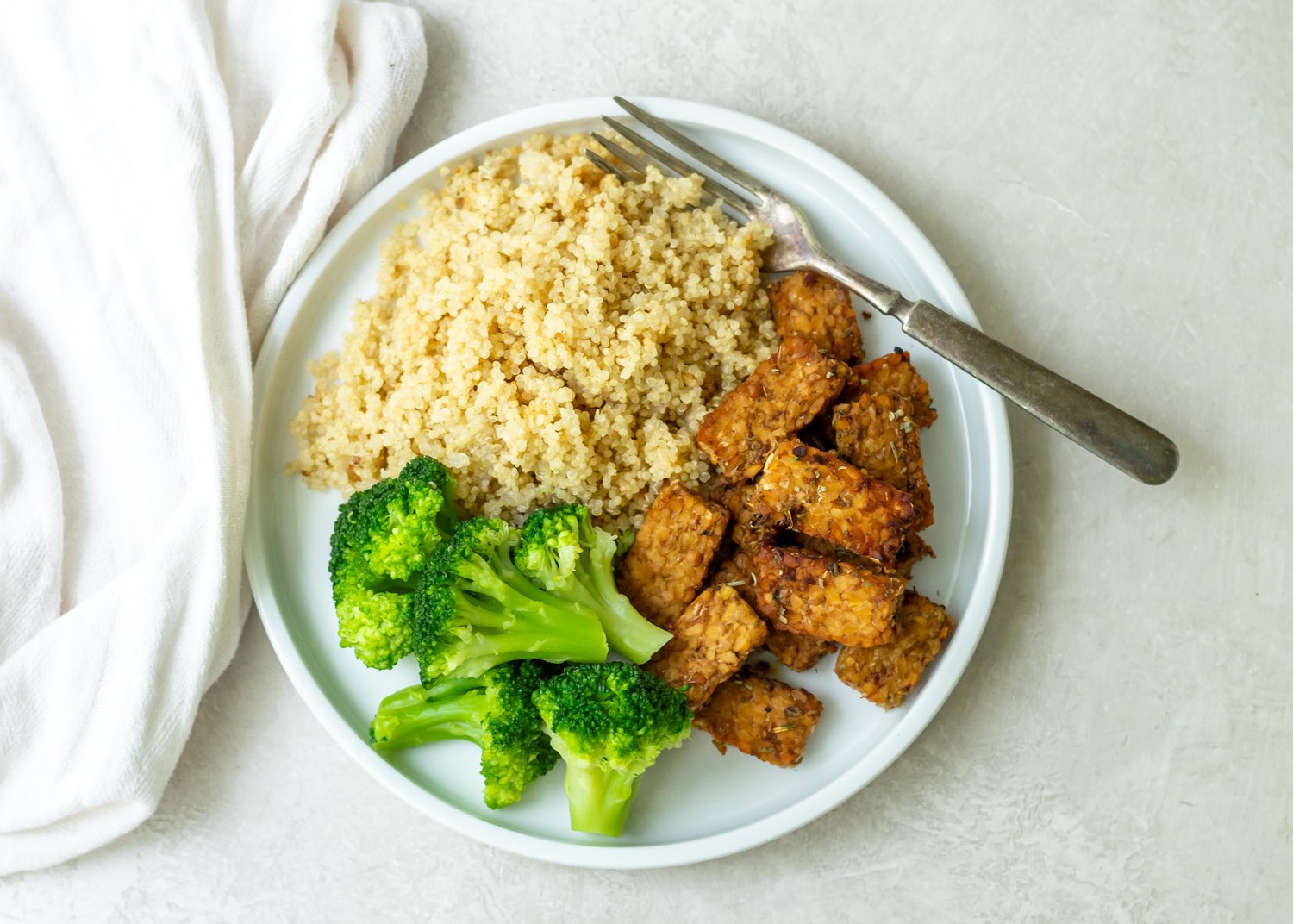Menopause is a natural phase in a woman’s life, but it often brings along a range of symptoms and health challenges. From hot flashes to bone loss and changes in metabolism, it can feel overwhelming at times. However, the right nutrition can play a significant role in easing these transitions and supporting overall health.
As a registered dietitian, I want to share some key dietary strategies and nutrient-rich foods that can help support women during menopause. By focusing on bone health, hormonal balance, and weight management, you can navigate this phase with greater ease.
Calcium & Magnesium: Building Stronger Bones
One of the most significant concerns during perimenopause and menopause is the increased risk of osteoporosis, due to the loss of estrogen. As estrogen levels drop, bone density can decrease, making bones more susceptible to fractures.
Calcium
Calcium is a critical mineral for bone health, and it’s important to get enough to help protect your bones during menopause. Foods like:
- Dairy products (milk, yogurt, cheese)
- Leafy greens (collard greens, kale, spinach)
- Fortified plant-based milks (almond, soy, or oat milk)
- Tofu and tempeh
Magnesium
Magnesium works in tandem with calcium to support bone health and prevent bone loss. It also helps with muscle function, sleep, and relaxation, which is especially important during menopause. Good magnesium-rich foods include:
- Nuts and seeds (almonds, pumpkin seeds)
- Whole grains (brown rice, quinoa, oats)
- Legumes (beans, lentils)
- Leafy greens (spinach, Swiss chard)
By incorporating both calcium and magnesium-rich foods into your diet, you can better support your bones as you navigate menopause.
Phytoestrogens: Naturally Supporting Hormonal Balance
One of the hallmark symptoms of menopause is hot flashes, which occur due to the decrease in estrogen levels. Some research suggests that phytoestrogens—plant compounds that mimic estrogen in the body—may help reduce these hot flashes and support hormonal balance.
Phytoestrogen-Rich Foods
Including foods that contain phytoestrogens may help alleviate hot flashes and other menopause-related symptoms. Some of the best sources of phytoestrogens include:
- Tempeh and tofu (fermented soy products)
- Broccoli
- Carrots
- Sesame seeds
- Flaxseeds
Adding these foods to your diet may offer relief from some of the more uncomfortable symptoms of menopause, while also providing important nutrients for overall health.
Low Glycemic Foods: Balancing Blood Sugar & Managing Weight
During menopause, many women experience weight gain and have difficulty managing their blood sugar levels. This can be linked to insulin resistance, which is more common as estrogen levels decline.
To help manage these changes, focusing on low glycemic foods—those that have a minimal effect on blood sugar—can be incredibly beneficial. By avoiding spikes and crashes in blood sugar, you can help with weight management and energy levels.
Low Glycemic Foods
- Whole grains (quinoa, brown rice, oats)
- Non-starchy vegetables (leafy greens, broccoli, peppers)
- Legumes (lentils, beans, chickpeas)
- Berries (blueberries, strawberries, raspberries)
Additionally, it’s important to limit added sugars and processed carbohydrates, as they can contribute to insulin resistance and weight gain. By opting for low glycemic foods, you can optimize your blood sugar and reduce the risk of sudden weight gain during menopause.
Protein: Preserving Muscle Mass & Managing Weight
As estrogen levels decline, many women experience a natural loss of muscle mass and strength. This can affect metabolism and contribute to weight gain. Ensuring adequate protein intake is vital for maintaining muscle mass, supporting healthy metabolism, and keeping your weight in check during menopause.
Protein-Rich Foods
Incorporating high-quality protein sources into each meal can help preserve muscle mass and balance blood sugar. Aim to get about 20% of your daily calories from protein, which can be achieved with foods like:
- Lean poultry (chicken, turkey)
- Fish (salmon, trout, sardines)
- Legumes (beans, lentils)
- Tofu and tempeh
- Greek yogurt
- Nuts and seeds
Protein also helps to regulate appetite and support a feeling of fullness, which can be particularly helpful for managing weight during menopause.
Healthy Fats: Supporting Heart Health & Hormonal Balance
During menopause, there is an increased risk of heart disease and other chronic conditions due to changes in hormone levels. Incorporating healthy fats into your diet can support cardiovascular health and help balance hormones.
Omega-3 & Omega-6 Fatty Acids
Healthy fats—particularly omega-3 and omega-6 fatty acids—are essential for heart health, brain function, and reducing inflammation. Some great sources of healthy fats include:
- Fatty fish (salmon, trout, sardines)
- Chia seeds
- Flaxseeds
- Avocados
- Extra virgin olive oil
Including these healthy fats in your diet can help reduce inflammation, support brain health, and improve overall wellbeing during menopause.
Nutrition plays a crucial role in managing the challenges of menopause. By focusing on bone health, hormonal balance, and weight management, you can navigate this stage of life with greater ease and confidence. Incorporate these nutrient-rich foods, and remember to focus on a balanced, whole-foods-based approach to nutrition.
If you’re experiencing symptoms like hot flashes, weight gain, or sleep disturbances, these dietary strategies can help provide relief and support overall health. Don’t hesitate to reach out to a registered dietitian to help tailor your nutrition plan to meet your unique needs during menopause!
Looking for specific recipes to include in your diet to best support your transition? Take a look at these delicious options!
Tempeh, Quinoa, & Broccoli

Ingredients
- 1/4 cup Vegetable Broth
- 1/4 cup Balsamic Vinegar
- 1 tsp Italian Seasoning
- 1/2 tsp Sea Salt
- 2 Garlic (clove, minced)
- 9 ozs Tempeh (cut into thin pieces)
- 3/4 cup Quinoa (uncooked)
- 3 cups Broccoli (cut into florets)
Instructions
Serving size: makes 3 servings. Nutrition Facts per serving: Calories 373 | Fat 12g | Saturated 3g | Carbs 44g | Fiber 5g | Protein 26g | Sodium 493mg | Potassium 912mg | Calcium 167mg | Iron 5mg
Salmon Stuffed Avocado Boats

Ingredients
- 1 Avocado
- 4 ozs Canned Wild Salmon
- 1/4 Lemon (juiced)
Instructions
Serving size: makes 1 serving. Nutrition Facts per serving: Calories 503 | Fat 36g | Saturated 6g | Carbs 18g | Fiber 14g | Protein 34g | Sodium 452mg| Potassium 1341mg | Calcium 67mg | Iron 2mg
Say goodbye to mealtime stress with our meal planning service
Made for you by a dietitian! Get customized weekly menus tailored to your preferences:
- Health goals
- Dietary patterns
- Allergens
- Calories/macros
- Cooking preferences



